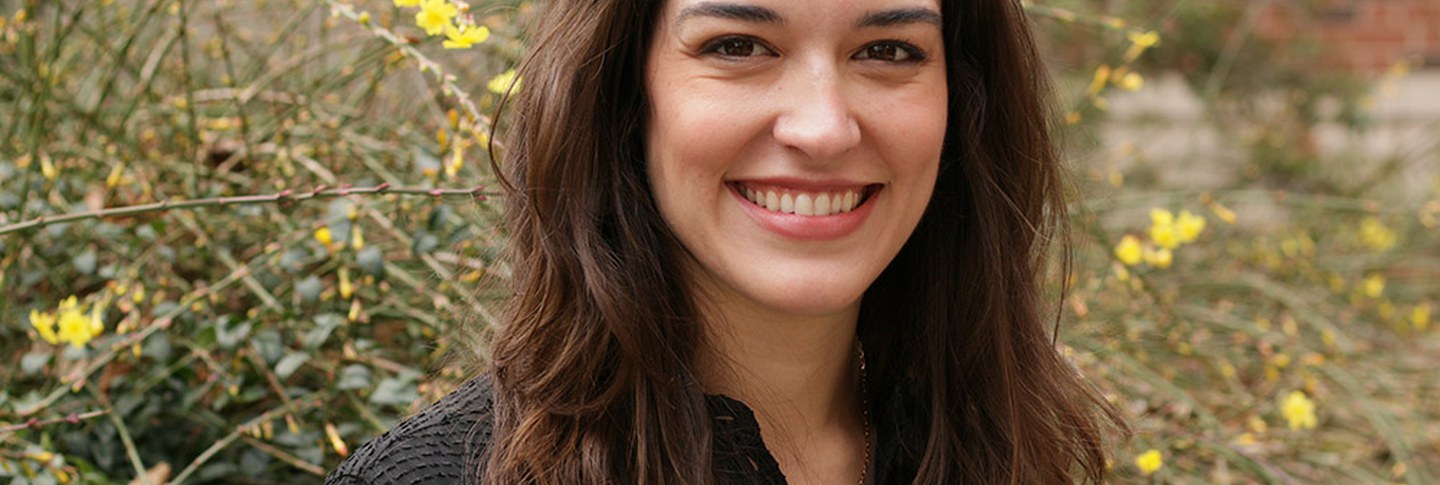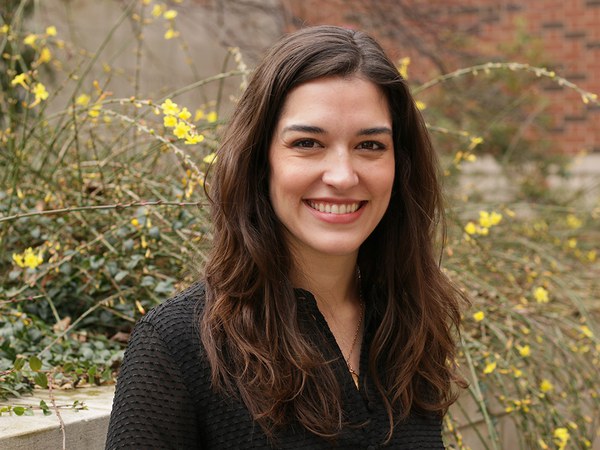Abbey Stockstill is a sixth-year PhD candidate in the Department of the History of Art and Architecture at Harvard University. She received her BA in 2011 from the University of Pennsylvania in Near Eastern languages and civilizations, and is currently a Tyler fellow here at Dumbarton Oaks.
Stockstill’s research report, “Crafting an Imperial Berber Identity: The Almohads and the Urban Landscape of Marrakesh,” outlined the interactions between two successive dynasties, the Almoravids and the Almohads, on the urban development of Marrakesh. Her work focuses on the repurposing of existing architectural structures—buildings, walls, fountains—and the underlying thought processes that determined the use, and reuse, of these elements in the formative years of urban development in Marrakesh.
A Brief Q&A with Abbey Stockstill
How did you shift your research focus from urbanism and architecture to ecology and landscape?
Well, I’m trained as an architectural historian, so I didn’t really consider urbanism and landscape to be a key component of this material until I did a landscape workshop here in November 2015. John Beardsley and Anatole Tchikine had put together a workshop for graduate students, both in art history and landscape studies, to come and talk about how the two fields come together. One of the takeaways from that project was that architectural historians are always looking at this material as an object, while landscape historians think in a completely different way. After that I kept thinking about how better to integrate this material and to think about urban landscape more holistically, rather than as a compendium of different sites. I’m still working on that integration, and for this material in particular it’s just not very well served by that traditional way we look at architectural history.
Your talk touched upon the ways in which cities can be structured by ceremony—the qibla, for instance, has to be incorporated into the design of the city. What is the mediation between practical and ritual concerns? And was there anyone in charge of mediation, of keeping track of that?
To start, I’ve been really influenced by Paula Sanders’s work on Fatimid Cairo. She’s written how the Fatimid caliphs employed ceremony in very public ways, both as imperial propaganda and as religious performance, so there are a lot of resonances in my own work with the theory and way she addressed ceremony.
In the particular case of Marrakesh, I haven’t seen anything in the records specifically talking about individuals organizing these ceremonies, but there must have been, and that’s something I’m still working on as part of the dissertation. But I think the key to a lot of this is that it’s not entirely religious, and it’s not entirely political, either—the two were very much integrated, political legitimacy and religious authority were very much tied together within the dynastic conception of the Almohad. That’s true specifically of the Almohad, but it’s also true in general in this period and region.
I find the repurposing of hallowed spaces fascinating. But are there problems that arise from this? How do you balance holding onto these traditional structures while also allowing the city to expand naturally?
One of the things that’s so unique about Marrakesh is that by the time the Almohads arrive there, it’s still a relatively new city—it had only been founded about a hundred and twenty years earlier. So there aren’t a lot of urban remains to contend with, and they really do have the room to make their own mark on the city. Now, that said, they sort of follow a precedent of systematic removal of architectural reminders of the dynasty that came before. This happens again and again and again with successive dynasties. They come in and destroy, for instance, the palaces built by the previous dynasty. But destroying mosques is a contentious topic, with worries about sacred space, and in Marrakesh this is exactly how they approach the Almoravid reminders. It’s actually unclear in the primary sources whether they completely destroy the Almoravid mosque or merely close it and let it fall into disrepair—a sort of passive destruction, if you will.
But with the palace they take very specific reminders and employ them in their own architecture. The palace itself was destroyed, but one wall remained that was the original qibla wall in the first mosque. There’s also a system of cisterns and fountains from the previous palace that they end up using for their mosque fountains, rather than trying to completely destroy those. They’re very smart about the reuse of materials. It’s a very conscious adoption of previous dynastic architectural reminders. And then, later, one of the things that I find so fascinating is that it never has this moment of being completely destroyed. The first one falls into disrepair, but we know that it exists—and the Almohad palace is destroyed but that whole area is continually rebuilt. So there’s something in the topography, or there’s something in the urban relationship between royal and public, that makes that space and that part of the city retain a connotation of sanctity and empire.
Read more interviews in our ongoing series.

